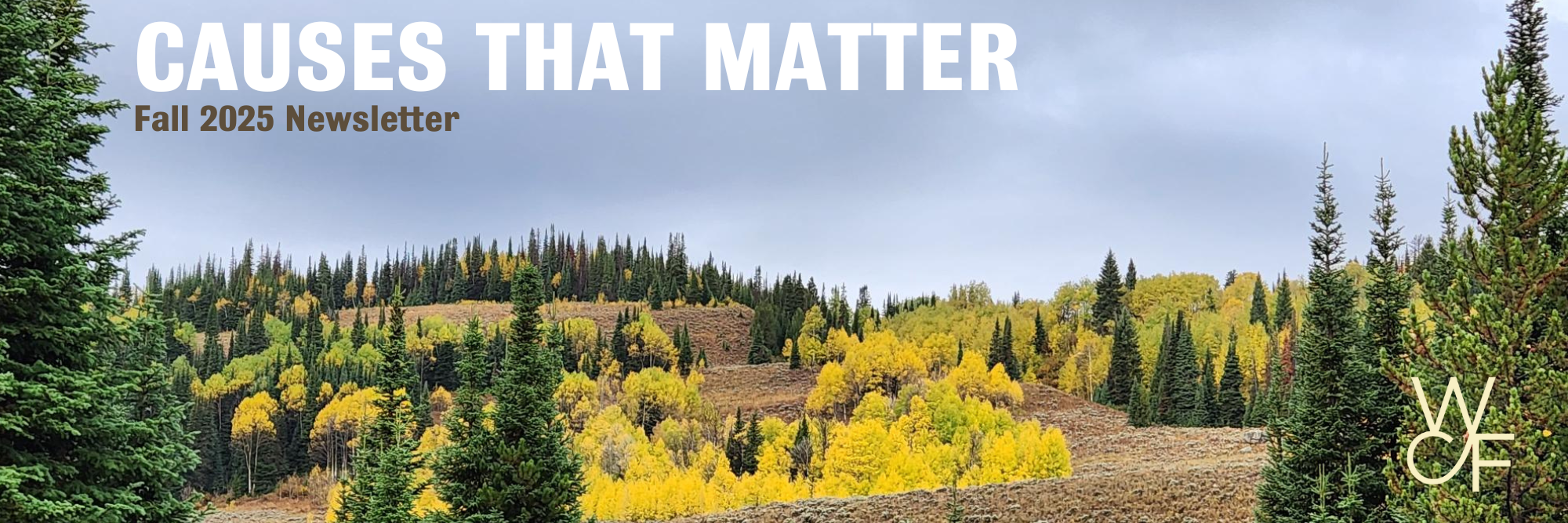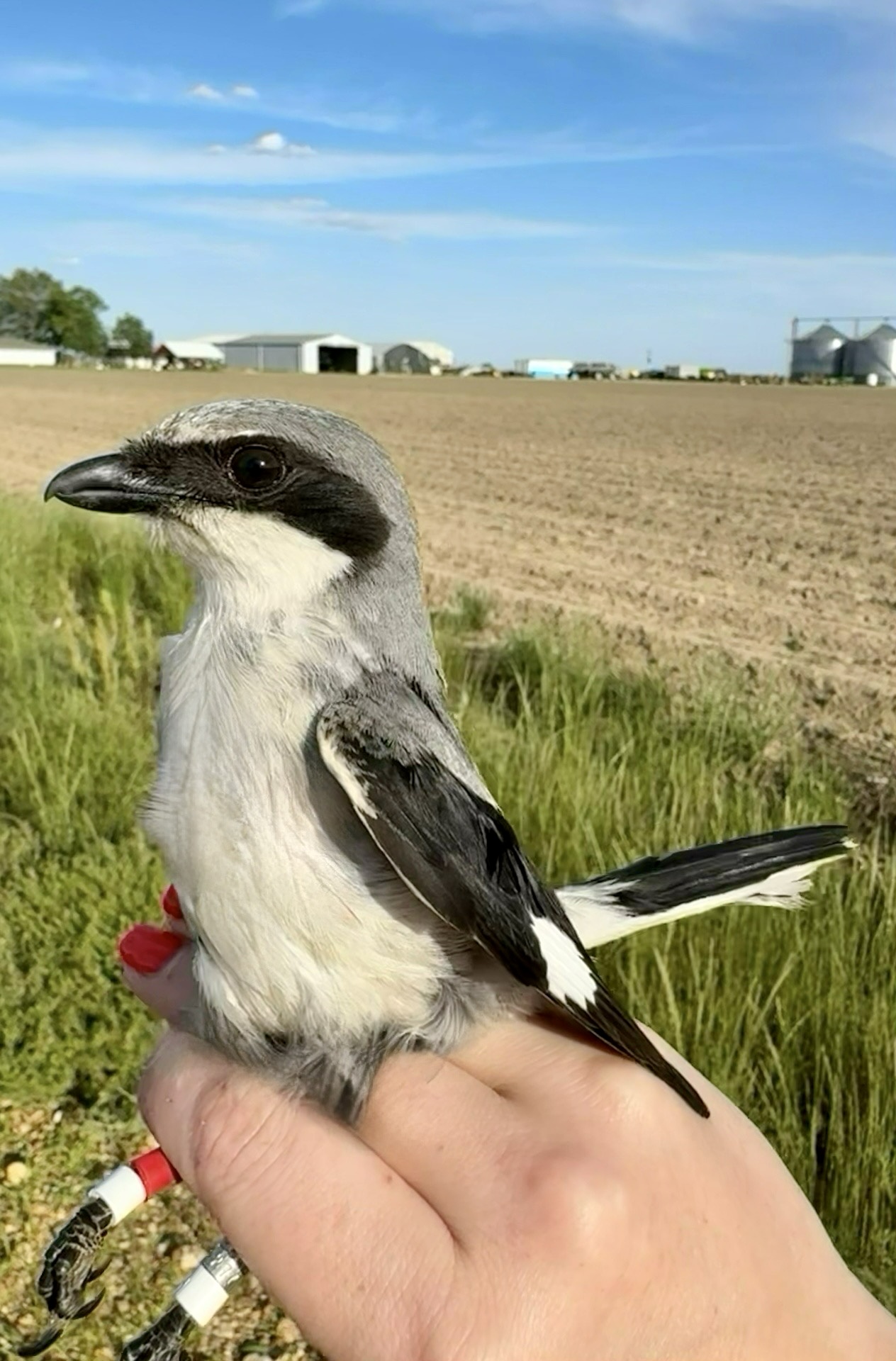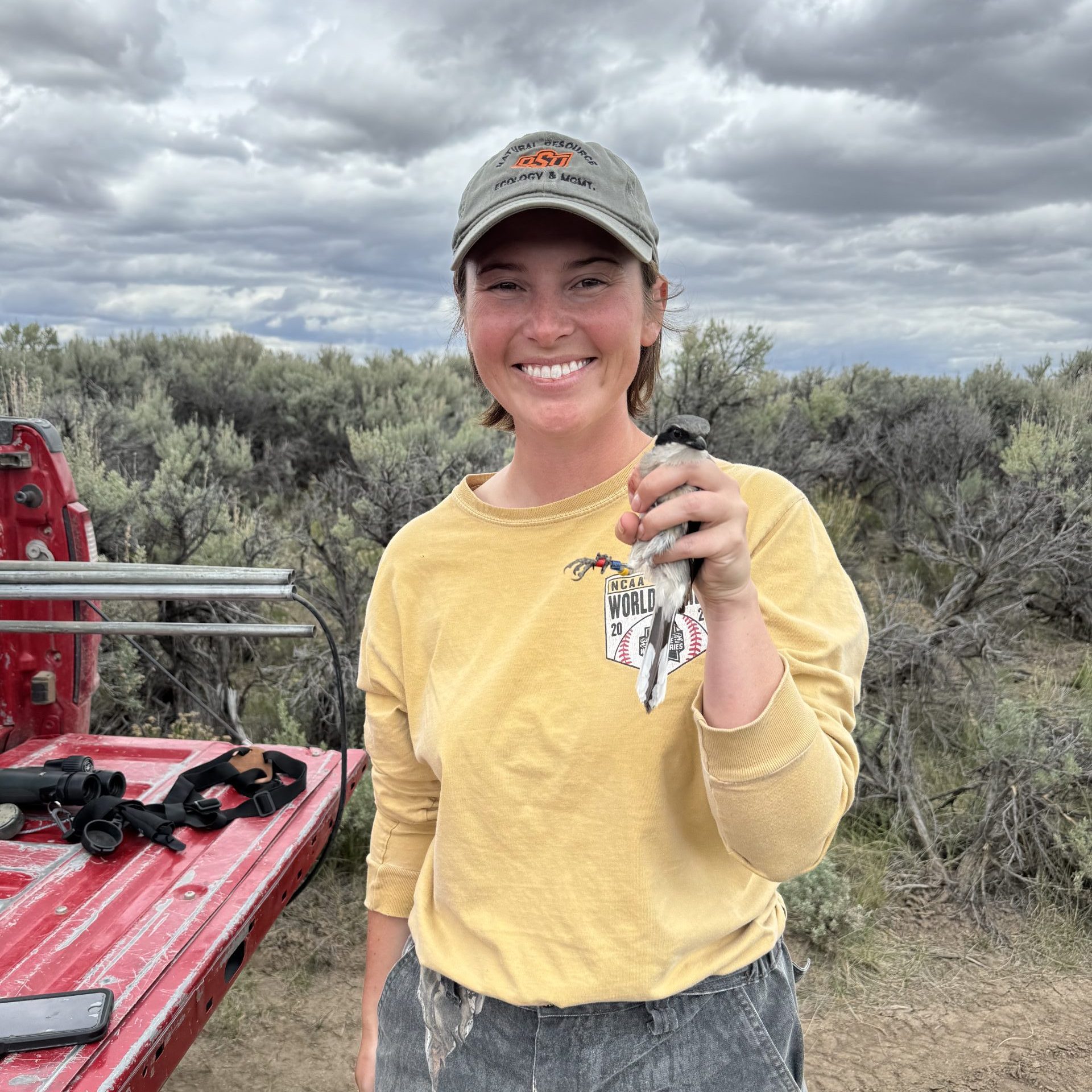
A Small Bird Has Big Impact
Loggerhead Shrike Research in Wyoming
Funding from the Butler Wyoming Nongame Wildlife Endowment
This story is from our Fall 2025 newsletter. See the full newsletter here!
Imagine a songbird the size of a robin. It may not appear to be a voracious hunter, but it is! This clever little creature, the Loggerhead Shrike, has evolved to use human-made and natural objects when hunting. Loggerhead Shrikes don’t have sharp talons like hawks or owls.
Instead, they use fences and thorny branches as tools. They impale insects, frogs, lizards, and mice on barbed wire or thorns. Once the prey is stuck, they tear it apart with their hooked beaks to feed.

Banded Loggerhead Shrike in Thunder Basin
For over 10 years, researchers from Oklahoma State University (OSU) have been studying this small but mighty bird in Wyoming’s Thunder Basin National Grassland.
Gary Butler, a retired Wyoming Game & Fish biologist, set up the Butler Fund at WYCF, supporting nongame wildlife species in Wyoming. This fund supports habitat conservation and research, so that important work like this can be boosted.
Studying Loggerhead Shrikes and learning why they matter is exactly what this fund was designed to do. The Loggerhead Shrike project has grown into one of the longest studies of its kind in the region.
Funding even allowed the team to add an extra field season in 2025, producing 11 years of data!

“These birds are what scientists call an ‘indicator species,’” explains Holly Todaro, a Ph.D. candidate and researcher on the OSU project. “That means their population trend tells us something important about the land they live on.”
This research is important because we can learn more about the land, water, and way of life that so many Wyoming families depend on.
Holly describes Loggerhead Shrikes as “metal” and “charismatic.”
These birds may be tough but aren’t immune to their own challenges. Across North America, Loggerhead Shrikes populations are declining because of habitat loss, pesticides, and other pressures. When Loggerhead Shrikes struggle, it’s often a sign that other animals in the same area are struggling too.
But they’re adapting to struggles in a cool way. Researchers witnessed something that had never been recorded in scientific literature. “One pair of birds built a nest on a portable cattle corral instead of in natural vegetation,” says Holly. “They’re making use of humanmade structures in new ways. That shows us how they can adapt as habitats change.”
Over the years, this long-term study has produced several scientific papers and new discoveries about how Loggerhead Shrikes live, nest, and survive in Wyoming. The findings will help guide future research and give conservationists better tools to protect grasslands for both wildlife and people.
For folks who live and work near Loggerhead Shrikes, these birds may already be a familiar sight. Thanks to this project, we now know how important these “metal little birds” are for keeping grasslands healthy.
